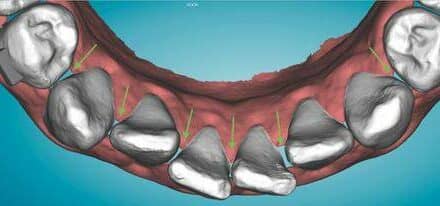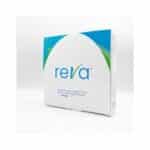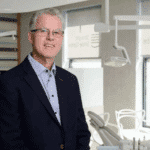With Yossi Bar-zion, Dds, ms
OP: What devices or methods do you use to communicate electronically with staff members, referring dentists, and patients?
Bar-Zion: Within our office, we use digital communications primarily to delegate and monitor tasks, schedule office events, and for instant messaging. One of the most challenging aspects in any office is the ability to keep everyone informed and on schedule. We have implemented a Web-based calendar that every staff member can view from any Web-browser interface, whether they are at the office or at home. This eliminates confusion about when certain projects are due and when events are scheduled.
Another challenging aspect in any orthodontic office is the delegation and monitoring of tasks. We use PDAs in our office to address this challenge. I can assign and delegate tasks right from my office or home computer, and, when synchronized, every team member can see their tasks, request more information, report a problem with the task, and let me know when the task is complete. When in the past I would have to remember everyone’s tasks and nag to get them done, I now can use any of the office computers and I can see what’s been done and what needs to be completed. I can assign priorities to each task as well as a deadline; it really makes task-management efficient.
Another aspect of electronic communication that we implemented in our office is instant messaging. Any staff member can now walk to any PC in the office and in-stantly message any other team member. This has been especially practical and useful when one of the office staff members wants to relay an important message to the office manager while she is in with a new patient during an exam. This way, she can answer a question, or get insurance information from the front desk without being disturbed. It also allows me to get a message to a staff member without making it obvious in some sensitive situations.
For several years now, I’ve been emailing radiographs and clinical photos to general dentists. It really makes it easy to discuss the case more effectively. We recently implemented instant communication with several offices to be able to discuss certain cases in real time. On my office computer I have four of the most popular instant messenger programs available. This allows me to communicate via various services that the other party may be using and across different platforms. The exciting part of using these services to discuss a case is that we can both look at the same thing, and use the “white-board” function to point and illustrate our concerns and goals. At the end of the discussion, the entire “conversation,” along with the illustrations, can be saved or printed for future reference. We currently have several referring general dentists and a pediatric dentist who instant-message me with referral questions. They feel that it’s more time-effective to send a message along with a picture and let me review and answer it between patients. In some instances, I may need to do some research to answer their question, whether it’s the patient’s file or the scientific literature; by having the ability to communicate electronically, we are not tied up on the phone while I search for information.
While most offices already implement some form of extraoffice communication—generally in the form of a Web site and email newsletters—we are now using electronic communication to provide parents treatment feedback in real time. We find that many of our patients’ parents are busy, and often do not accompany their kids to the appointments. At times, it is important to discuss certain problems, such as poor hygiene or cooperation, with parents. We now can invite a parent to view our computer’s desktop. The parent can call us from work, and I can explain to them my concerns while showing them the clinical pictures. We also use this function to discuss exam findings with a parent who was not present at the initial consultation. Instead of simply talking to them on the phone, I can now show them crowding, overjet, overbite. A digital picture is worth a thousand words.
OP: Has this led to your having less “face time” and phone time with people?
Bar-Zion: I often follow the electronic communication with a phone call, but now the bulk of the conversation can be directed on a personal level (how’s the family and the like) since the main clinical issue has already been described and often resolved electronically. Similarly, when I meet with a clinician to whom I already sent the digital records and po-tential treatment options electronically, I find that we quickly agree on a treatment decision and get to spend the balance of our lunchtime in leisure discussing other interests and topics.
OP: Do you have plans to extend the reach of your electronic communication system, and if so, how?
Bar-Zion: I constantly try to improve the way we utilize electronic communications in the office. I’m now working on performing the synchronization of the portable handheld devices seamlessly using Bluetooth technology. This way, when I leave or enter the office, my PDA will automatically synchronize with all of the daily messages and calls that I need to return. I can then use the drive home to make these calls and use that time more efficiently as well. z
Yossi Bar-Zion, DDS, MS, has published and lectured on the applications of electronic communications in orthodontics. He maintains a private practice in Moorpark and Thousand Oaks, Calif, and he is a part-time faculty member in the University of Southern California department of Orthodontics. He can be reached at [email protected].








